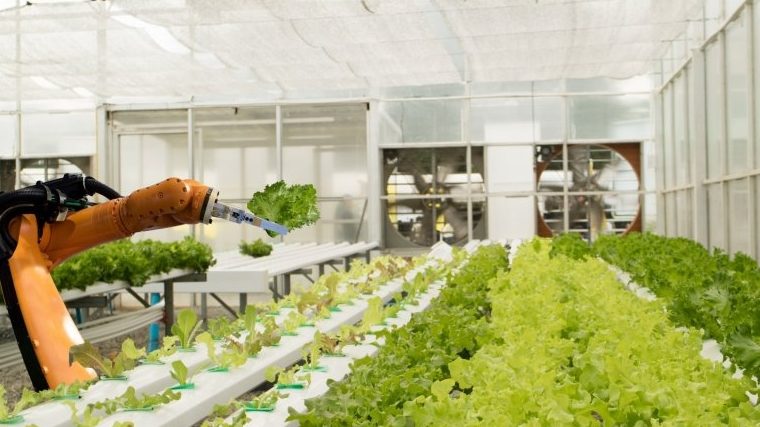A great Start-up idea with AI in play can produce marvelous results, is what Iron Ox is doing. Start-up Iron Ox has completely transformed as to how a traditional agriculture is done with use of robots. Now through robotic farming leafy greens are grown in hydroponic vats or plant trays.
No need to worry, as they are not going to kill the jobs as humans are still needed to run this farm. Although the produce of this farm is 30 times more than traditional farming per acre and that is mind boggling. We will need more of these farms in future as ever depleting natural resources and farm produce and ever increasing demand for the same is going to create havoc in future which we underestimate. This robotic farming is the future.
Iron Ox is a perfect example of ( robotic farming ) agriculture and technology fusion. Founded in 2015, it has created a fully autonomous farm in San Carlos, California. The autonomous hydroponic indoor farm relies on two robots to plant, care for and harvest produce.
The robotics farm which is 8,000 square feet of indoor space (roughly 0.2 acres), its engineers use the robot systems to produce roughly 26,000 heads of lettuce, leafy greens, and herbs each year in hydroponic vats.

Co-founder and CEO Brandon Alexander, who previously worked at Google’s research lab X and at influential robotics incubator Willow Garage says “Getting to even this level of automation took years of work to navigate the constraints of modern robotics.”
This start-up, Iron Ox has raised $6 million in seed funding, led by Eniac Ventures as on date.
How it works
Iron Ox has developed two robotic systems for robotic farming. The system comprises the porter, the arm and a computer program named “the Brain”.
The porter named Angus is a 1,000-pound wheeled bot that moves pallets of seedlings around the warehouse in their hydroponic growing vats or trays.

Second the robotic arm, that picks up individual plants and moves them from vat to vat for seeding and transplanting.

The complete process is overseen by computer program “the Brain”. It monitors the growing conditions in each pallet and adjusts their balance of gases and nutrients for optimal growing conditions.
Reaching even this level was a challenge said Alexander, as light source is needed for growing. Iron Ox originally planned to use LEDs for growing but the electricty bill would have shut down the start-up, so they switched to traditional greenhouses augmented by LEDs.
The robots at Iron Ox use machine learning and AI to detect pests and diseases in robotic farming. They can remove infected plants before the problem spreads.
Advantages of robotic farming
Hydroponics has a upper hand over traditional farming.
It uses less water.
It’s completely sterile.
It’s much more space efficient.
It’s completely organic and pesticide free.
“So one of the great things about the robots is that they don’t really get tired and they don’t really care what hours they work. And so as long as they’ve got juice in the batteries, they can keep going,” Jon Binney (CTO and Co-founder) said.
Disadvantages that needs attention for mass scale growth
It requires more labor. Labor cost is over 50% expensive than traditional farming. For final product packaging and planting each seedling still human labor is needed.
– It’s resources intensive.
– Growing in scale still not possible.
– Cannot compete with traditional farming as of now.
What it produces of robotic farming
As of now this robotic farm only grows leafy greens and herbs but soon it aims to grow more traditional crops like tomatoes.
Although, it cannot compete with traditional farming still it has edge over it, in form of fresh produce sold at premium to restaurants. The traditional farm produce aren’t really fresh. “It’s traveling on average 2,000 miles from farm to grocery store, which means a lot of people are eating week-old lettuce or strawberries, ” Alexander explained.
“Our ultimate goal is not to sell produce to bougie grocery stores,” says Alexander. “Our competitors are huge outdoor fields, and if we can’t compete with them, we’re always going to be a niche player.” Although this start-up aims to be selling it’s produce to large chain store by 2019
Robotic farming is the future as we become more and more technologically advanced and Earth resource depleting every second. .











